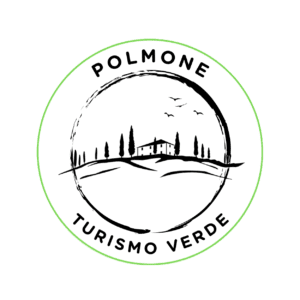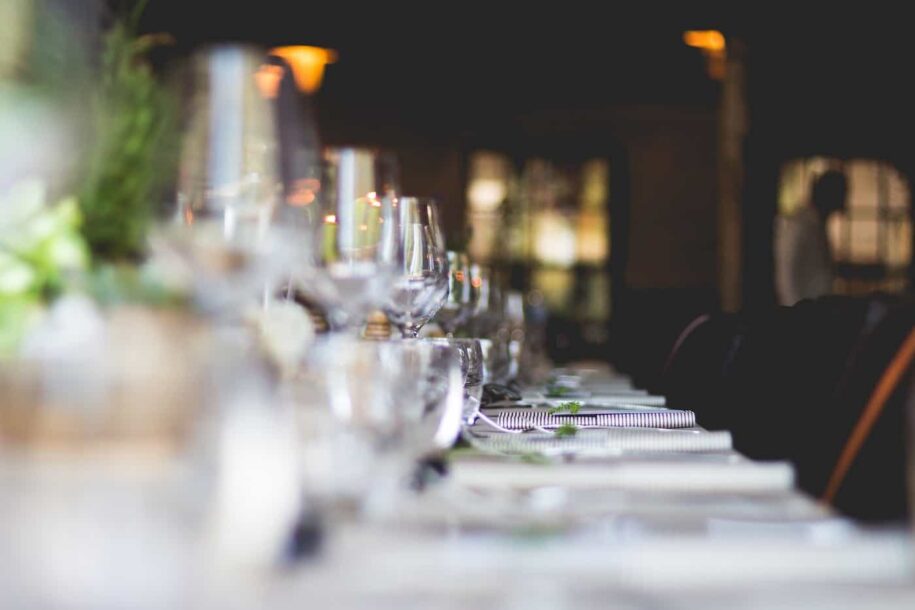(This article is taken from the Gazetta of Polmone, the blog written by Roos Zwager on the previous Polmone Turismo Verde site)
The quality of wine from the Umbria region is getting better and better. Umbria is really making a name for itself in terms of wine. Most people are familiar with the famous wines from Tuscany such as Chianti Classico, Brunello di Montalcino and Vino Nobile di Montepulciano. Top wines. But knowledge about wine from the Umbria region does stop at drinking the famous Orvieto Classico. The Sagrantino and the Montefalco Rosso are still quite unknown in the Netherlands.
In this article, I take you through the wine of the Umbria region. When are the grapes harvested? How is wine made? What does the designation IGT, DOC or DOCG actually mean on the label of a bottle of wine? And which grapes grow in the Umbria region for making wine? Finally, no fewer than 14 Umbrian top wines have made it into the famous wine guide of Gambero Rosso, Italy's leading food and drink magazine.
Vendemmia
The vendemmia, or grape harvest, in Umbria runs roughly from September to October.
Perhaps it would be nice to explain how the entire winemaking process works. That's why I went to Paolo Sapio, the farmer from San Venanzo who wants to become self-sufficient. He was about to harvest. Unfortunately I couldn't be there for the picking itself. But then a good friend took photos that I was allowed to use for this article. The other photos are from a few years ago when friends of ours started making wine for the first time.
Making Wine
How is wine actually made? We all know that grapes are picked, but what actually happens before you can drink a glass of that delicious liquid?
The process differs for making white and red wine.
Making White Wine
When the white grapes have been harvested, they are first destemmed in the so-called 'diraspatrice' and then stripped of their skins in the 'torchio', the grape press. The grape liquid, the must, is poured into large stainless steel or synthetic resin vats and then the alcohol formation starts. The sugars in the grape must will ferment into alcohol. One month after the must has been placed in the barrels, the sugar content is measured and the must is purified of all residues that have settled at the bottom of the must. This is quite easy because there is a tap at the bottom of the barrel at exactly the right height. This way, the winegrower can easily drain the must into a clean barrel and the residues remain behind the tap in the barrel.
This proces is repeated every month and after 5 months all sugars have been converted into alcohol. A final filtering is carried out and the new white wine is released on the market in March.
Making Red Wine
When making red wine, things are a little different. When the red grapes have been harvested, they are first destemmed in the 'diraspatrice', just like the white grapes. But the grapes are not stripped of their skins afterwards. Color and taste are better preserved this way. The must then goes into stainless steel or synthetic resin vats and remains there for 10 to 15 days to ferment. The must must be stirred every day and only pressed after 10 to 15 days and placed in stainless steel barrels. After another 10 to 15 days, the must is purified from the residues that have settled to the bottom of the barrel. In contrast to white wine, this purification is only done 2 to 3 times. Since time immemorial, red wine has been ready to drink on November 11. So around that date you will find the Novello, the new wine, in stores again. Most of the red wine is left in wooden barrels for another 2 years to mature further.
Four Quality Levels
Umbrian wines have undergone an enormous development in recent years.
Through archaeological finds, we know that the Etruscans were already producing wine in Umbria. The Romans particularly appreciated the sweeter Umbrian wine. Especially in recent years, Umbrian wine is doing better and better thanks to increasingly modern winemaking techniques. Many Umbrian wines earn the DOC or DOCG designation. Indeed, since 1992, Italian wine has been officially classified into four classes. Below is an example of 2 of the 4 classifications. The first 2 are IGT wines, the 3rd a DOCG
1. Vino da Tavola
Qualification Vino da Tavola, in Italian table wine, includes the more simple wines. No rules have been established for producing a vino da tavola. Often these wines are made from grapes from different areas of Italia. Incidentally, such a so-called blend can also be a fine wine, the name vino da tavola certainly doesn't say it all
2. Indicazione Geografica Tipica, IGT
IGT is a kind of intermediate category intended for new wines. These are Italian wines that do not yet qualify for a traditional classification. The reason is that the winegrower in question, for example, does not use traditional grapes or applies special vinification techniques. The classification does indicate that the wine comes from a specific Italian region. For example, at least 85 percent of the wine must come from the geographical area of which it bears the name.
3. Denominazione di origine controllata or DOC
If one wants to be DOC-mentioned, you must indicate to the Italian Chamber of Commerce the number of vineyards and the yield per hectare. The control over the DOC certification is in the hands of an umbrella consortium, the responsible ministerial bodies and the anti-fraud institutions. If these DOC wines are found to be of substandard quality for five years, they will be downgraded to IGT wine or else. With the DOC label you quickly think that this has to do with the quality of the wine. This does not have to be the case, the classification only guarantees the origin of the grapes and the production method used.
4. Denominazione di origine controllata or DOC
The label DOCG was introduced in 1980. The letter 'G' stands for Garantita, guaranteed, and this must guarantee the quality of the wine. It is the highest qualification for Italian wine and is subject to the strictest wine legislation in the world. Nowhere else are there so many requirements for the assessment of wine or is the legislation so strict. One of the most important differences between DOC and DOCG is that the yield per hectare with the DOCG designation is lower than with the DOC. A DOCG wine must also undergo an 'apprenticeship' of at least five years.
A DOCG wine is already subjected to a chemical and technical analysis during the production phase. The inspectors test whether the wine contains sufficient substances such as polyphenols, sugars and acids to qualify for the DOCG classification. The other test is performed after the wine has been bottled and aged. Now we check whether the wine has developed the characteristics for a DOCG wine. For example, it is checked whether the wine is well balanced. If the wine ultimately meets all the required requirements, it may carry the highly sought-after DOCG on its label.
The main grape varieties in Umbria
It might be nice to know about the main grape varieties used to make wine in Umbria. In fact, the other day I poured a glass of red Merlot for one of our guests who was surprised that we were pouring French wine. And his surprise became even greater when I told him that the Merlot grape also grows here and is used to make wine.
White grapes | Red grapes |
|---|---|
| Trebbiano | Merlot |
| Grechetto | Sagrantino |
| Verdello | Sangiovese |
| Malvasia | Cabernet Sauvignon |
| Bellone | Ciliegolo |
| Gamay |
Wines of the Umbria Region
Everyone knows Orvieto Classico. A dry white wine from the Orvieto area, made from the procanico and native grechetto grape. But pay attention when you buy it! There is also a sweet variety, the Abboccato, which was very popular in the Middle Ages.
Fun fact: the 15th century Luca Signorelli demanded that he be allowed to drink as much wine as he wanted while painting his famous frescoes in the Duomo of Orvieto! That's what you call ideal working conditions!
Surely the most important Umbrian wine region is the area around Montefalco with its Sagrantino grape and the increasingly emerging Montefalco Rosso. Not a smaller brother of the Sagrantino, but really a different wine with its own character from the excellent Sangiovese grape. When in Umbria, you should definitely visit this area. You drive past one cantina to another. Stop to visit one of these wineries!
Finally, the Rosso di Torgiano, a red wine, is also worth mentioning. The Rubesco from the Lungarotti winery is also very affordable.
It is impossible in this article to mention all the special wines of the Umbria region, but below you will at least find an overview of its best wines.
14 Most interesting Umbrian top wines
Meanwhile, the new authoritative Italian wine guides have come out again, such as the Gambero Rosso wine guide. An important Italian food and drink magazine. They have selected 14 top wines worthy of the 'Tre Bicchieri' designation in the Umbria region. A region that, as they say, remains small, but is big on beauty and great food and drink!
- Montefalco Rosso Lampante Ris. '17 - Tenute Lunelli - Castelbuono
- Adarmando Trebbiano Spoletino '18 - Giampaolo Tabarrini
- Brecciaro Ciliegiolo '18 - Leonardo Bussoletti
- Cervaro della Sala '18 - Castello della Sala
- Fiorfiore Grechetto '18 - Roccafiore
- Mattone Bianco Trebbiano '19 - Briziarelli
- Montefalco Rosso Pomontino '18 - Tenuta Bellafonte
- Orvieto Cl. Villa Barbi '19 - Decugnano dei Barbi
- Montefalco Sagrantino Collepiano '16 - Arnaldo Caprai
- Montefalco Sagrantino Molino dell'Attone '15 - Antonelli - San Marco
- Orvieto Cl. Sup. Luigi e Giovanna '17 - Barberani
- Montefalco Sagrantino Medeo '16 - Romanelli
- Todi Grechetto Sup. Colle Nobile '18 - Tudernum
- Torgiano Rosso Rubesco V. Monticchio Ris. '16 - Lungarotti
Come and taste the wine of the Umbria region for yourself
The authoritative Italian magazine Gambero Rosso says. Umbria is a small region that is big on beauty and great food and drink.
Would you like to discover this small but beautiful region in all its glory? And would you like to taste the local wine in the nearby castle of Montegiove? Then book an apartment at Polmone Turismo Verde and explore!

